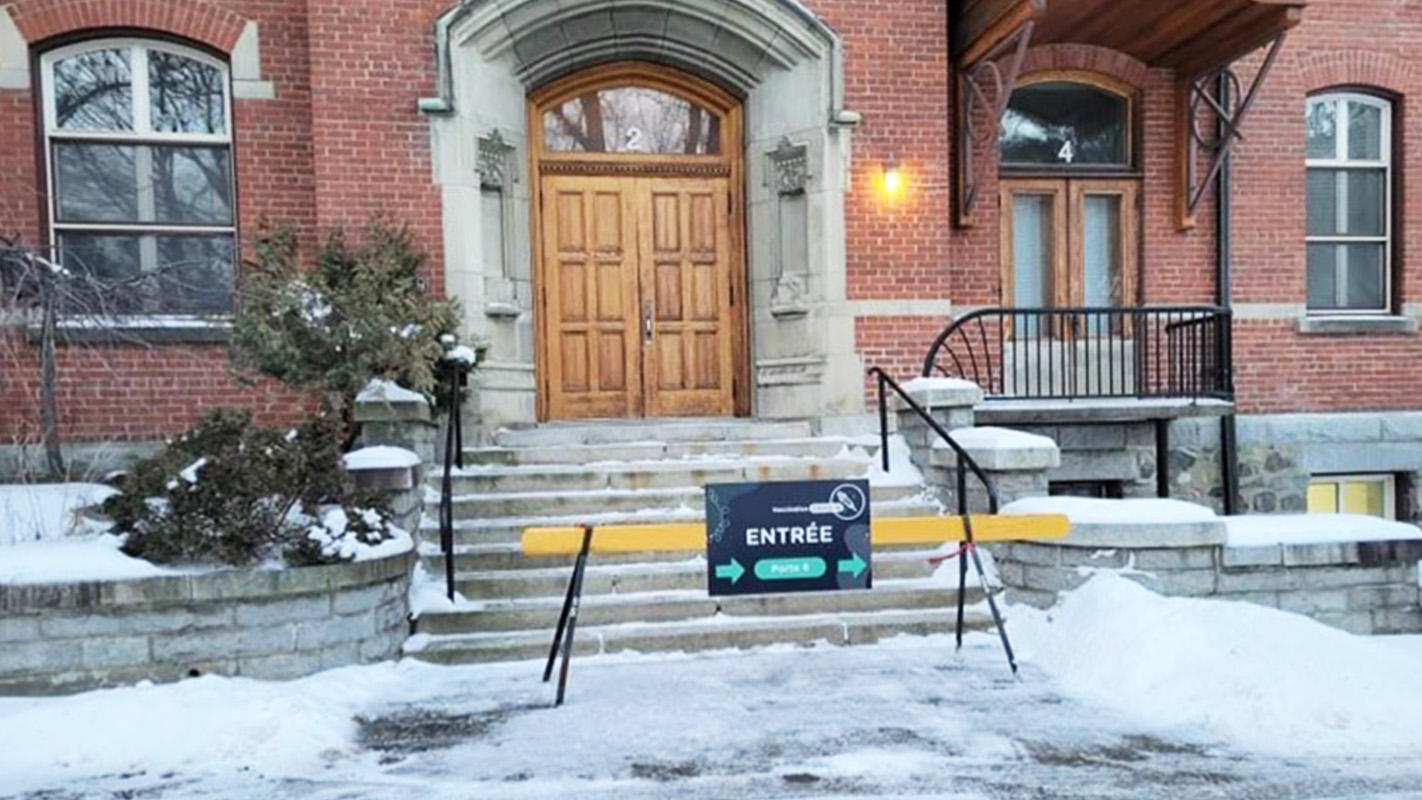By Gordon Lambie
As a part of the effort to increase local vaccination capacity, the CIUSSS de l’Estrie – CHUS is opening up a new vaccination centre on Bowen Street in Sherbrooke, but according to Jean Delisle, director of the vaccination campaign in the Eastern Townships, the space will not be open to the general public.
“We will start, in this centre, in order to accelerate the booster shot for select priority groups identified by the ministry,” Delisle said, naming emergency services workers, daycare workers, and healthcare professionals as examples. “The services offered by this centre will be by-invitation and will be adjusted regularly depending on the need.”
The campaign director said that it is not impossible that this centre will be opened to the public later on, but for the moment he said that the goal is to focus the general population at the site on J.-A.-Bombardier Street in Sherbrooke which has a larger capacity, better parking, and is more accessible to people with mobility challenges.
Anyone who is eligible to get their booster shot at the Bowen Street site will be contacted directly, he added, discouraging people who have not received such a notification from showing up.
In general, Delisle described the local vaccination effort as being on the right track. So far, he said close to 900,000 doses have been administered in the region overall, more than 98,000 of which have been booster shots.
Whereas the region’s capacity had been rolled back, the arrival of the booster has pushed the ministry to build back up again and Delisle said that the goal is to have the region delivering 36,000 shots per week.
The regional health authority for the Eastern Townships gave its first data update in close to a month on Monday, following a press conference to update aspects of the local situation at the end of last week. As of Monday’s information, 55.2 per cent of the region’s children aged 5-11 had received a first dose, with coverage ranging between 60.4 per cent in La Pommeraie, and 34.3 per cent in the Des Sources area.
Delisle said that the CIUSSS is conscious of the big difference between regions and intends to make a plan on how to address different regions’ needs, but he also said that while children are at home the focus is on getting the booster campaign moving at a good pace. The campaign director noted, however, that the large number of children who caught COVID-19 in the weeks since the school-age vaccination became available has an impact on when they are allowed to go get a dose. He also shared that of the roughly 2,000 first-doses given in the last seven days in the region, between 600 and 700 were for children 5-11.
The first set of children in that age group to have received their shots at the end of 2021 will become eligible for a second dose starting Jan 20.
According to the information provided by the CIUSSS de l’Estrie – CHUS on Monday, there were 4,006 known active cases across the region. There were 132 people in hospital with the virus in the region, 22 of whom were in intensive care.
The number of hospitalizations related to COVID-19 in the province of Quebec increased to 2,554 on Monday, a jump of 118 compared to Sunday. That number was based on 351 new admissions and 233 discharges, and it includes 248 people who are in intensive care. The number of people in ICU beds represents a decrease from Sunday, as 24 new patients were admitted while 33 were discharged.
This marked the first time that the total number of people in intensive care across the province decreased since Dec. 22, although the number was still higher on Monday than it was in Friday’s report.
There were 26 new Covid-related deaths recorded on Monday, bringing the total since the start of the pandemic to 11,966.
The province reported 10,573 new cases on Monday, but that came paired with a drop in the number of PCR tests conducted as a part of the effort to test only for priority groups.
The province is expected to introduce a means by which at-home test results can be included in provincial reporting shortly, but in the meantime the public is being reminded that the daily case number reports are likely underestimated compared to reality.






